
Recognizing featured Plant Cell first authors: Vera Gorelova
Blog, Research, Research Blog, The Plant Cell, The Plant Cell: Author ProfilesVera Gorelova is the featured first author of Dihydrofolate Reductase/Thymidylate Synthase Fine-tunes the Folate Status and Controls Redox Homeostasis.
Current Position: PhD candidate at Ghent University looking for a new challenge
Education: MSc. In Biology, Novosibirsk State University, Russia
Non-scientific…

Recognizing featured Plant Cell first authors: Rene Schneider
Blog, Careers, Careers - Blog, Research, Research Blog, The Plant Cell, The Plant Cell: Author ProfilesRene Schneider, featured first author of Two Complementary Mechanisms Underpin Cell Wall Patterning during Xylem Vessel Development
Current Position: Postdoctoral Researcher and Lecturer at the University of Melbourne, Australia.
Education: PhD (2013) Bio-Physics, Dresden University of Technology,…
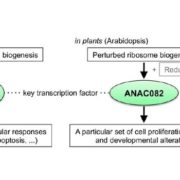
Proliferate at Your Own Risk: Ribosomal Stress and Regeneration
Blog, Research, Research Blog, The Plant Cell, The Plant Cell: In BriefPlant growth and development are extremely adaptable to changes in the external environment, including nutrient status, light quality and intensity, and temperature. Thanks to their developmental plasticity, plants can also initiate new organs from differentiated tissue following wounding, to the benefit…
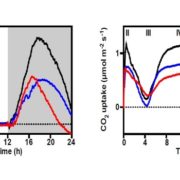
Stop the Clock: Optimized Carbon Fixation and Circadian Rhythm in a CAM Plant
Blog, Research, Research Blog, The Plant Cell, The Plant Cell: In BriefThe energetically costly tendency of the carbon fixing enzyme RuBisCO to, every now and then, fix oxygen instead of carbon dioxide has led to the evolution of various carbon concentrating mechanisms in plants and algae. One such mechanism, Crassulacean acid metabolism (CAM), involves primary CO2 fixation…

A Phloem Protein Contributes to Aphid Resistance and Heat Stress Tolerance
Blog, Research, Research Blog, The Plant Cell, The Plant Cell: In BriefAphids are highly destructive insect pests—in addition to robbing plants of sugar-rich phloem sap, they carry viruses that can be deadly to the plant. To reach the phloem sap, aphids must penetrate the plasma membrane of sieve elements. Mature sieve elements, which are virtually empty, translocate…
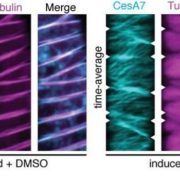
Evidence for Two Distinct Stages in Secondary Cell Wall Formation of Xylem
Blog, Research, Research Blog, The Plant Cell, The Plant Cell: In BriefA hallmark of xylem development is the deposition of secondary cell wall material in specific patterns (reviewed in Patrick et al, 2007). These cell wall deposits structurally reinforce the xylem to withstand negative pressure during water transport and differ in different xylem cell types. While it…
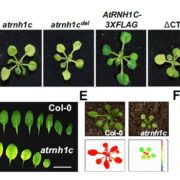
Thrown for a Loop: How RNase H1 and DNA Gyrases Limit R-loops and Maintain Genome Stability in Chloroplasts
Blog, Research, Research Blog, The Plant Cell, The Plant Cell: In BriefWe all know that DNA is the stable nucleic acid, in comparison to its flighty, unstable cousin RNA, right? Well, unusual things happen when metabolic processes require DNA to unwind from its stable, redundant double-helical form. For example, during transcription, the RNA that exits RNA polymerase can…
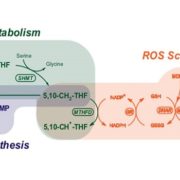
Folate Metabolism Linked to Redox Balance in Arabidopsis
Blog, Research, Research Blog, The Plant Cell, The Plant Cell: In BriefFolates are soluble B9 vitamins with essential functions in all kingdoms of life—both in organisms that produce these vitamins de novo (fungi, plants, and most microorganisms) and in those that do not (animals). As essential cofactors in one-carbon transfers, different folate species mediate the biosynthesis…
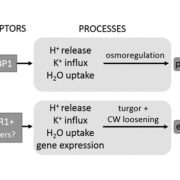
Protoplast Swelling Requires AUXIN BINDING PROTEIN1
Blog, Plant Physiology: On The Inside, Research, Research BlogConvincing molecular and biochemical evidence exists that members of the TRANSPORT INHIBITOR RESPONSE1/AUXIN SIGNALING F-BOX PROTEIN (TIR1/AFB) receptor family are auxin receptors that trigger auxin-induced gene expression and hypocotyl growth through enhanced expression of SMALL AUXIN UP RNA genes.…

